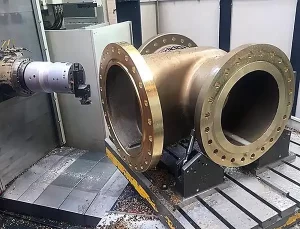Industry Sector
Oil and Gas
The needs of the oil and gas industry are extremely complex and diversified. Applications range from drill heads and fluid ends for upstream oilfield equipment, to transport, downstream hydrocarbon processing, and much more. The demands and extreme working environment equipment operate in can be extraordinary.
Drill bits produce a wellbore to extract crude oil and natural gas. They can produce diameters up to 30 inches and penetrate to 30,000 feet. Subsurface material is broken apart mechanically by cutting elements of the bit by scraping, grinding, or fracking. The cuttings produced by the bit removed from the wellbore and returned to the surface by direct circulation.
Hydraulic fracturing uses frac pumps to transmit fracking fluid into the wellbore. Each frac fleet uses around 18-20 frac pumps. These pumps consist of two major components, the power end and the fluid end. Fluid ends perform the high pressure injection of fluid into the well and are subjected to extreme force.
According to Hydrocarbon Processing, of all the process operations in a refinery or petrochemical plant, heating and cooling streams are perhaps the most pervasive. A typical refinery has anywhere from 200 exchangers, on the low end, to almost 350 for a large, complex refinery.
Manifolds and valves support interruption-free flow diversion in oil and gas production. They are designed to converge multiple junctions into a single channel or diverge a single channel into multiple junctions. Manifolds are used to divert oil or gas from: the separator to crude oil burners for disposal, to surge or gauge tanks for measurement or storage, or direct flow to a production line, maintain flow when testing requires certain equipment be pulled out of service.
TARUS has a number of solutions for equipment providers ranging from our gundrilling and BTA deephole drilling machines for tube sheets to our exciting new UNIMAX Universal series for drill bits, fluid ends and valves/manifolds.
Oil and Gas
Applications
Oil and Gas Application
TARUS Machine
Drill Bits
In oil and gas production, a drill bit is what cuts into rock. Located at the tip of the drillstring, below the drill collar and the drill pipe, the drill bit is a rotating apparatus that usually consists of two or three cones made up of the hardest of materials (usually steel, tungsten carbide, or diamonds) and sharp teeth that cut into the rock and sediment below.
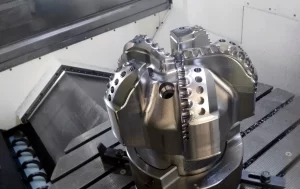
Fluid Ends
Hydraulic fracturing is the technique to produce oil and natural gas. It uses frac pumps to transmit fracking fluid into the wellbore, and each frac fleet uses several frac pumps. These pumps consist of two major components, the power end and the fluid end. Responsible for the high-pressure injection of fluid into the well, these fluid ends in the fracking environment are exposed to extreme stress under in normal operation.
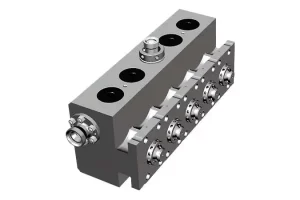
Impellers/Turbine Components
Impellers have wide ranging application from pumps, to turbines, to turbochargers. Machining impellers benefits from simultaneous 5-axis milling, and requires extremely tight-tolerance geometry. The TARUS UNIMAX series is perfect for this application.
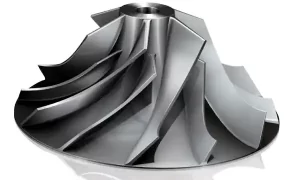
Tube Sheets
While different heat exchangers are used in oil and gas production operations, the shell-and-tube exchanger is by far the most common type of heat exchanger. It can be applied to liquid/liquid, liquid/vapor, or vapor/vapor heat transfer services. Tube sheets are critical supporting elements in heat exchangers. They consist of a dense arrangement of thin walled tubes situated inside an enclosed, tubular shell. Tubes are supported on either end by sheets which are drilled in a predetermined pattern to allow the tube ends to pass through the sheet. The ends of the tubes which penetrate the tube sheet are expanded to lock them in place and form a seal.
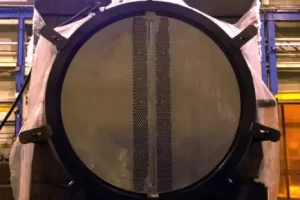
Valves/Manifolds
Manifolds and valves support interruption-free flow diversion in oil and gas production. They are designed to converge multiple junctions into a single channel or diverge a single channel into multiple junctions. Manifolds are used to divert oil or gas from: the separator to crude oil burners for disposal, to surge or gauge tanks for measurement or storage, or direct flow to a production line, maintain flow when testing requires certain equipment be pulled out of service.
